Related Research Articles

The Archdiocese of Ancona–Osimo is a Latin Church ecclesiastical territory and metropolitan see of the Catholic Church in the Marche region of Italy.

The Archdiocese of Florence is a Latin Church metropolitan see of the Catholic Church in Italy. It was traditionally founded in the 1st century, according to the 14th century chronicler Giovanni Villani. The diocese was directly subordinate to the Holy See (Papacy) until 1420.

The Diocese of Verona is a Latin diocese of the Catholic Church in northern Italy. The diocese belongs to the Ecclesiastical Province of Venice. The bishop of Verona has his seat in Verona, Veneto. The episcopal throne is in the cathedral, which had originally been dedicated to S. Maria Matricolare and S. George.

The Archdiocese of Benevento is a Latin archdiocese of the Catholic Church. It currently has five suffragan dioceses: the diocese of Ariano Irpino-Lacedonia, the diocese of Avellino, the diocese of Cerreto Sannita-Telese-Sant'Agata de' Goti, the Territorial Abbey of Montevergine, and the archdiocese of Sant'Angelo dei Lombardi-Conza-Nusco-Bisaccia.

The Roman Catholic Diocese of Ferentino existed until 1986, when it was united into the new diocese of Frosinone-Veroli-Ferentino.

The Diocese of Bergamo is a Latin diocese of the Catholic Church in Italy, and is a suffragan of the Archdiocese of Milan. Geographically, Bergamo stood between the mainland interests of the Republic of Venice, and the territory of the Duchy of Milan. The duchy was regularly contested by the French and the Holy Roman Empire, which brought about repeated military operations. Internally, from the 12th to the 15th century, there was the usual party strife between the Guelphs, who generally supported the political and religious policies of the Papacy; and the Ghibellines, who generally supported the Emperors. As Kings of Italy, the emperors were feudal overlords of Lombardy.

The Archdiocese of Siena-Colle di Val d'Elsa-Montalcino is a Latin Church archdiocese of the Catholic Church in Tuscany. The seat of the archbishop is the Cathedral of the Assumption in Siena. Until 1459, the diocese was immediately subject to the Holy See (Papacy), and its bishops attended the Roman synods. In 1459, Pope Pius II made Siena a metropolitan archbishopric.

The Archdiocese of Pisa is a Latin Church metropolitan see of the Catholic Church in Pisa, Italy. It was founded in the 4th century and elevated to the dignity of an archdiocese on 21 April 1092 by Pope Urban II. The seat of the bishop is the cathedral of the Assumption in the Piazza del Duomo.

The Diocese of Pitigliano-Sovana-Orbetello is a Latin Church diocese of the Catholic Church in the ecclesiastical province of the Metropolitan Archdiocese of Siena-Colle di Val d'Elsa-Montalcino, in Tuscany. The diocese of Sovana had originally been directly dependent upon the Holy See, and its bishops attended the pope's synods. When Pope Pius II, who was a Piccolomini of Siena, created the metropolitan archdiocese of Siena, he made Sovana one of its suffragan dioceses. The bishops of Sovana usually resided in the former palace of the Orsini in Pitigliano, which was given to Bishop Francesco Pio Santi (1776–1789) by the Grand Duke of Tuscany.
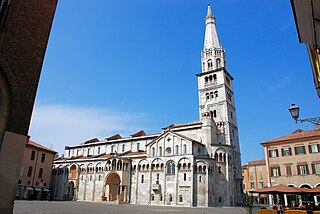
The Archdiocese of Modena–Nonantola is a Latin archdiocese of the Catholic Church in Italy. It existed as the Diocese of Modena in central Italy from the 4th century. Originally it was a suffragan the diocese of Milan, but later became a suffragan of Ravenna. Because of the schism of the Antipope Clement III, Pope Paschal II released Modena from obedience to the church of Ravenna, but Pope Gelasius II restored the previous status. Modena continued as a suffragan of Ravenna until 1582, when the Archdiocese of Bologna was created by Pope Sixtus V in the Bull Universi orbis of 1 December 1582, and was assigned Modena as one of its suffragans.
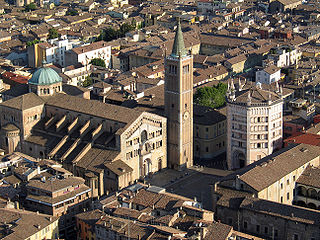
The Diocese of Parma is a Latin diocese of the Catholic Church. It has properly been called Diocese of Parma-Fontevivo since 1892. The bishop's seat is in Parma Cathedral. The diocese is a suffragan of the Archdiocese of Modena-Nonantola.
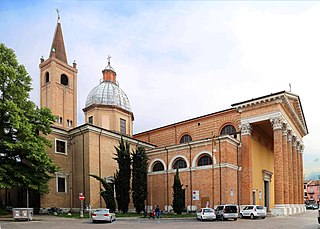
The Diocese of Forlì-Bertinoro is a Latin diocese of the Catholic Church in Romagna, Italy. Until 1986 it was known as the Diocese of Forlì, in existence perhaps from the fourth century. In that year the Diocese of Bertinoro was united to it. The diocese is suffragan to the Archdiocese of Ravenna-Cervia.

The Diocese of Lodi is a Latin diocese of the Catholic Church that existed since the 4th century; it is a suffragan of the Archdiocese of Milan.
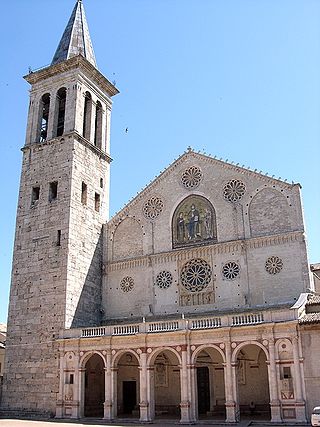
The Archdiocese of Spoleto-Norcia is a Latin Church ecclesiastical territory or archdiocese of the Catholic Church in Italy. Historically, it was the Diocese of Spoleto. Elevated to the status of an archdiocese since 1821, it is a non-metropolitan see and is immediately exempt to the Holy See.
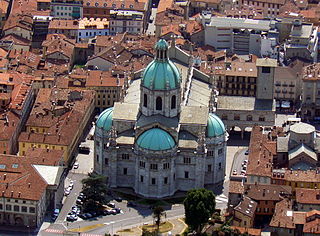
The Diocese of Como is a Latin Church ecclesiastical jurisdiction or diocese of the Catholic Church in northern Italy. It was established in the Fourth Century. It is a suffragan diocese in the ecclesiastical province of the metropolitan Archdiocese of Milan. The Bishop of Como's cathedra is in the Como Cathedral.

The Diocese of Arezzo-Cortona-Sansepolcro is a Latin diocese of the Catholic Church. It has existed since 1986. In that year the historic diocese of Arezzo was combined with the diocese of Cortona and the diocese of Sansepolcro, the enlarged diocese being suffragan of the archdiocese of Florence.

The Archdiocese of Ferrara-Comacchio is a Latin Church archdiocese of the Catholic Church. It has existed since 1986, when the diocese of Comacchio was combined with the historical archdiocese of Ferrara. It is a suffragan of the archdiocese of Bologna.
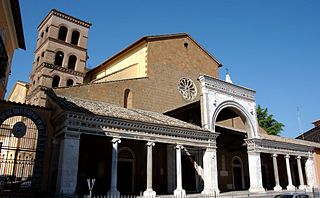
The Diocese of Civita Castellana is a Latin Church ecclesiastical territory or diocese of the Catholic Church in Latium, central Italy. It has existed in the current form since 1986, when the Diocese of Nepi e Sutri was united into the Diocese of Civita Castellana, Orte e Gallese. The Diocese of Gallese had been added to the Dioceses of Civita Castellana and Orte in 1805. The name of the diocese was shortened in 1991, in accordance with Vatican policies. The diocese of Civita Castellana is immediately exempt to the Holy See.

The Diocese of Montalcino was a Roman Catholic diocese located in the town of Montalcino to the west of Pienza, close to the Crete Senesi in Val d'Orcia in Tuscany, Italy. In 1986, it was suppressed and united with the Diocese of Colle di Val d'Elsa and the Archdiocese of Siena to form the Archdiocese of Siena-Colle di Val d'Elsa-Montalcino.

The Diocese of Nebbio was a Roman Catholic diocese located in the town of Saint-Florent in Corsica. The Cathedral is on a low hill one mile from the port of Saint-Florent. In the Medieval period the Bishop of Nebbio was also the temporal lord of nearly all the lands in his diocese. In 1667, Nebbio was completely abandoned and the bishop lived in Saint-Florent, a town of about 200 inhabitants, under the dominion of the Republic of Genoa. The diocese had some 22 places. The Cathedral Chapter had two dignities, the Archdeacon and the Provost, and three Canons. In 1770 the diocese was under the dominion of the King of France, and Saint-Fleur had about 600 inhabitants. The Chapter of the Cathedral still existed, with two dignities and six Canons.
References
- ↑ Belotti, B.; Banca popolare di Bergamo (1989). Storia di Bergamo e dei bergamaschi. Storia di Bergamo e dei bergamaschi (in Italian). Edizioni Bolis. p. 327. Retrieved 7 November 2018.
- ↑ Ferdinando Ughelli; Nicola Coleti (1719). Italia sacra, sive De episcopis Italiæ, et insularum adjacentium (in Latin). Vol. Tomus quartus (4). Venice: apud Sebastianum Coleti. p. 466.
- ↑ Giuseppe Ronchetti (1807). Memorie istoriche della città e chiesa di Bergamo (in Italian). Vol. Tomo III. Bergamo: Natali. pp. 127–136, esp. 135–136.
- ↑ Ughelli-Coleti, p. 469. Ronchetti, III, p. 163.
- ↑ J.-D. Mansi (ed.), Sacrorum Conciliorum nova et amplissima collectio, editio novissima, Tomus XXII (Venice: A. Zatta 1778), p. 463.
- ↑ Annamaria Todeschini, Papato ed Impero in età medioevale, Milano Vita e pensiero 2003, consultato il 4 Dicembre.[ page needed ]